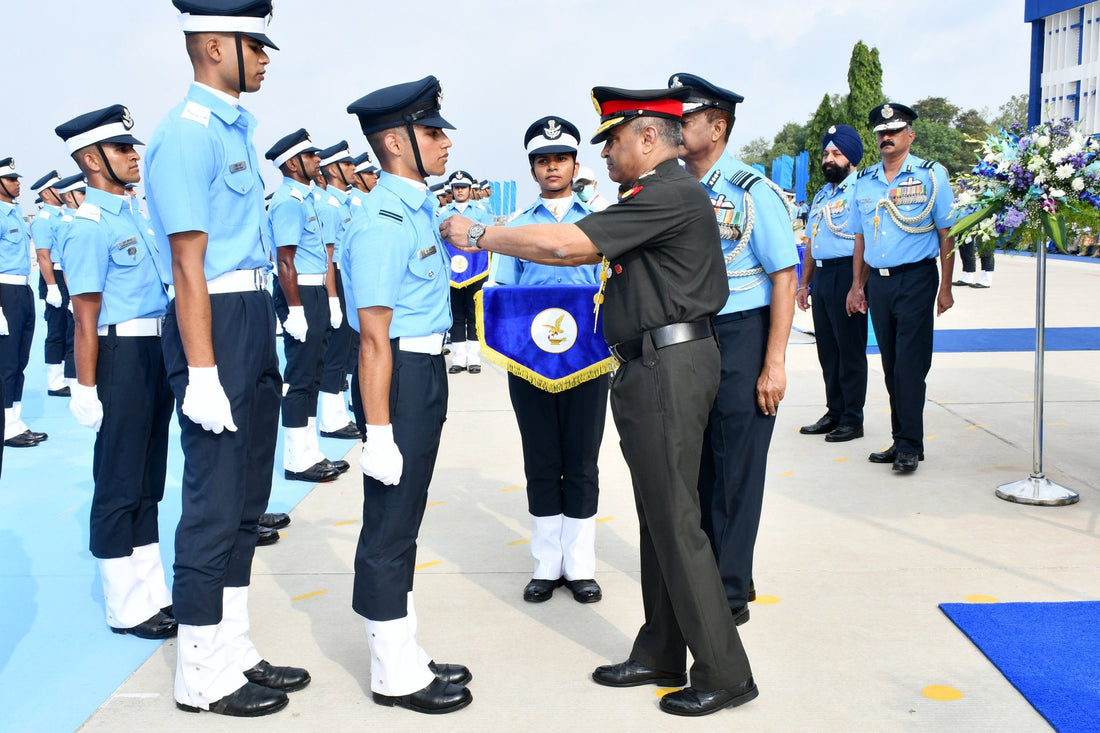AFCAT 1 2025 Result Out, Direct Result Link, Check Qualifying Marks

The AFCAT (Air Force Common Admission Test) is a pivotal examination for aspiring candidates looking to join the Indian Air Force (IAF). Every year, thousands of candidates participate in this test in hopes of securing a position in one of the most prestigious air forces in the world. The significance of the AFCAT can’t be overstated, as it serves as a crucial stepping stone for candidates aspiring to serve the nation in various capacities, whether as a pilot, ground duty officer, or in other technical roles. As the AFCAT 1 2025 results have been recently declared on March 17, 2025, we delve into the details that candidates need to be aware of, including how to check their results, understanding the scorecard, and the implications of their scores for future selection processes.
Result Declaration
The results of AFCAT 1 2025 have been announced, offering a moment of truth for many candidates who are eager to know their fate in the highly competitive selection process. Released by the Indian Air Force, the results are imperative for the hundreds of candidates who took the exam earlier this year. The announcement date marks a significant milestone in this exam cycle, kicking off the next stages of selection for those who have qualified.
How to Check the Result
Accessing your AFCAT 1 2025 result is a straightforward process that can be accomplished through the official website. Here’s a step-by-step guide to ensure you can view your results without any hiccups:
- Visit the Official Website: Navigate to afcat.cdac.in.
- Find the Result Link: Look for the “AFCAT 1 result 2025” link prominently displayed on the homepage.
- Login Credentials: Input your registration ID and password in the designated fields.
- View Your Result: After submission, your result will appear on the screen. It is wise to download and save your scorecard for future reference.
Details on the Scorecard
The scorecard holds crucial information that reflects your performance in the examination. Understanding what is included in this document is vital for candidates, as it outlines your standing in the selection process. The AFCAT 1 scorecard contains:
- Candidate’s Name: Clearly stating who the results belong to.
- Registration Number: A unique identifier for tracking purposes.
- Total Score Obtained: The total marks out of the maximum possible.
- Section-wise Marks: A detailed breakdown of your performance across different sections of the exam.
- Cut-off Marks: Indicative of the minimum score required to qualify.
- Qualifying Status: Clear indication of whether the candidate has passed or failed.
Cut-Off Marks
Understanding the cut-off marks is essential for gauging one's performance relative to peers. For AFCAT 1 2025, the cut-off mark has been set at 121 for all categories. This score acts as a benchmark, and candidates must meet or exceed this mark to advance to the next stages of selection.
Marking Scheme
The marking scheme for the AFCAT is structured to balance ambition with fairness. Here's a quick breakdown:
- Correct Answers: Each correct response earns the candidate 3 marks.
- Incorrect Answers: A deduction of 1 mark is incurred for each wrong answer.
- Unanswered Questions: No penalty is applied to questions left unanswered.
Normalization is also a pivotal aspect of the marking process. The IAF applies this technique to ensure that variations in question difficulty across different shifts do not disadvantage any candidates. This marks a commitment to equality and fairness in the selection process.
Good Score Range
While the cut-off score provides basic parameters for qualifying, a "good score" can greatly enhance a candidate's chances in the later selection phases. A score in the range of 150-170 is generally considered advantageous. This buffer not only confirms eligibility but also increases the likelihood of progressing to the next round, which involves more rigorous testing.
Normalization Process
Normalization serves a crucial purpose in ensuring that all candidates are evaluated on a level playing field. Given that AFCAT may be conducted in multiple shifts, variations in the exam's difficulty can impact scores. The normalization process adjusts raw scores to account for these variances. This ensures fairness and consistency in results, giving all candidates a fair chance irrespective of when they took their exam.
Next Steps for Candidates
Once the results are out, candidates gearing up for the next phases need to be prepared for the subsequent selection steps, notably the Air Force Selection Board (AFSB) interview. The AFSB is a rigorous process comprising several stages designed to assess not just knowledge, but also the candidate’s potential and personality. The interview process includes:
- Officer Intelligence Rating Test (OIRT): Tests the cognitive abilities of candidates.
- Picture Perception Test: Evaluates candidates’ perception and analytical skills.
- Psychological Test: Assesses mental stability and psychological fitness for the role.
- Group Tests: These are interactive exercises designed to evaluate teamwork and leadership skills.
- Personal Interview: A one-on-one discussion with assessing officers to gauge fitment for the IAF.
For candidates aiming to join the flying branch, an additional Computerised Pilot Selection System (CPSS) test is mandatory, ensuring that only the most qualified are considered.
Historical Context of AFCAT
To appreciate the importance of the AFCAT in 2025, it is enriching to reflect on its historical growth. The exam has evolved from a simple recruitment metric into an essential element of India's formidable air military strategy. Launched in 2011, AFCAT has embraced the changing dynamics within the Indian Air Force and has continually adapted to incorporate advancements in technology and educational assessments.
As the demands of modern warfare evolve, so too does the competitive landscape for aspirants. The AFCAT not only serves as a gateway into the IAF but also becomes reflective of the changing expectations from military personnel. Candidates are now expected not just to perform tasks but to embody the ethos of integrity, courage, and dedication in an ever-unpredictable environment.
Statistical Data and Research Insights
Recent statistics indicate that around 1 lakh candidates register for the AFCAT exam each cycle, underscoring its popularity and the competitive nature of the selection process. Historically, only about 10-12% of candidates qualify for the AFSB after the AFCAT examination, making it crucial for aspiring aviators to approach their preparation with diligence and strategic focus.
Challenges and Solutions
One of the significant challenges faced by candidates is the intense competition. With thousands vying for limited vacancies, standing out is critical. Here are some strategies that can help overcome these challenges:
- Structured Preparation: Utilize resources from established platforms such as SSBCrack and SSBCrackExams, which offer specialized study materials, online courses, and eBooks tailored for AFCAT preparation.
- Regular Mock Tests: Taking simulated exams helps familiarize candidates with the test format and timing pressure.
- Peer Study Groups: Collaborating with fellow candidates can provide different perspectives and share useful resources.
- Recruitment Trends: Staying well-informed about the shifting trends in military recruitment and adapting one's preparation approach accordingly can also boost chances of success.
Future Trends and Predictions
As we look to the future of AFCAT examinations and military recruitment in India, several trends are worth noting. The rise of digital education tools indicates that aspiring candidates will increasingly rely on online resources for preparation. Moreover, with advancements in technology and shifts in combat dynamics, the qualifications and skills required by the IAF are likely to evolve. Tech-savvy candidates who are proficient in areas like cyber warfare, drone management, and artificial intelligence will probably find themselves at an advantage in the coming years.
Conclusion
The declaration of the AFCAT 1 2025 results marks the culmination of months of preparation and hard work for many aspiring pilots and air force officers. Understanding how to check the results, interpreting the scorecard, recognizing the significance of cut-off marks, and preparing for subsequent stages are key elements that candidates need to master.
For those who qualify, the pathway to an illustrious career within the Indian Air Force becomes a real possibility. Tailoring your preparation with credible resources, remaining informed about the selection process, and honing the necessary skills will ensure that candidates not only succeed in AFCAT but also thrive in their future roles within the defence services. As we look ahead, the emphasis on thorough preparation and understanding the nuances of the recruitment process will be essential for all candidates navigating this competitive landscape.



















